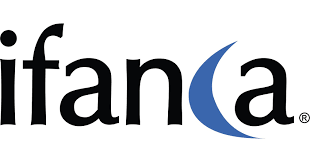
Indonesia prepares 1.4 million domestic livestock for Eid al Adha sacrifice
Photo: Indonesian President Joko Widodo (2nd L) stands next to a cow before it is slaughtered at Al Karomah Mosque during Eid al Adha festival in Martapura, Indonesia South Kalimantan province, September 24, 2015 in this picture taken by Antara Foto. REUTERS/Herry Murdy Hermawan/Antara Foto
JAKARTA – Indonesia’s government has prepared 1.4 million animals for the Eid al Adha festival of sacrifice, anticipating 1.1 million to be slaughtered, director general of livestock and animal health at the agriculture ministry Ketut Diarmita told Salaam Gateway.
300,000 are reserved for contingencies such as a surge in demand and animal deaths pre-Eid.
“We have already prepared animals for sacrificial worship in 2017 as many as 1.4 million tails, consisting of 440,323 cows, 9,851 buffaloes, 755,288 goats as well as 227,479 sheep. Based on these data, the estimated needs of livestock for Eid al Adha 2017 can be guaranteed fully met from the provision of local livestock," said Diarmita.
279,221 cows, 7,535 buffaloes, 650,583 goats and 82,438 sheep were slaughtered for Eid al Adha last year, totaling 1.019 million animals, according to Diarmita. He estimates this year’s demand to increase by 10 percent compared to last year.
PRICES
Consumer cattle prices normally rise between 5 and 30 percent before Eid al Adha, according to a report from the ministry of agriculture’s market information service.
The current price of cattle in Java, home to almost 60 percent of Indonesia’s population, is between 47,000 and 65,000 Indonesian rupiah ($3.52 - $4.86) per kilogram of live weight. Prices are cheapest in East Java, ranging between 47,000 and 52,000 rupiah, and highest in West Java, between 51,000 and 65,000 rupiah.
The simultaneous increase in demand for sacrificial animals in almost all provinces drives up the price at the producer and consumer level just before the day of Eid al Adha.
Demand is higher in the bigger provinces of Java, Sumatra, Kalimantan and Sulawesi.
Demand for sacrificial animals is relatively inelastic as Muslims are willing to pay higher prices for the ritual slaughter.
HEALTH AND SAFETY
The general directorate of livestock and animal health has initiated steps to ensure the health and safety of both livestock and humans.
Three abattoirs in Jakarta, where demand is high, have been designated for the ritual slaughters. This is a move away from the traditional practice of using public and pedestrian walkways, and is needed to safeguard the public against the risk of transmission of zoonotic diseases that can be transferred from animals to humans or vice versa. The move to dedicated abattoirs is funded by the state.
Animal health inspection, monitoring, and the supervision of sacrificial slaughter have been designated to relevant authorities, including the divisions of animal health, and animal husbandry and veterinary.
Engagement at the grassroots level and through the media has focused on raising awareness of animal welfare and the correct way to slaughter.
From September 1 to 6 during the Eid al Adha period, reporting officers, who include village reporters and field staff monitoring and supervising ritual slaughters, will use iSIKHNAS, an online and integrated SMS gateway animal health reporting system. It provides data and information animal health practitioners and policymakers use to make decisions for control and prevention measures.
"The measures mentioned above are expected to provide spiritual reassurance to Muslims who will carry out the sacrificial worship while providing security guarantees for sacrificial meat to people who are in need," said Diarmita.
Cows, buffaloes, sheep, goats, and camels are slaughtered to commemorate prophet Ibrahim’s willingness to sacrifice his son Ismail on God’s command. Animals must be in good health, and free from disabilities or handicaps. Meat of sacrificial animals can be kept for personal consumption, and distributed to relatives and the needy.
Eid al Adha will likely fall on September 1 this year, marking the end of the haj. The exact date will be announced by the Saudi authorities after the moonsighting on Monday, August 28.
($1 = 13,363.5996 Indonesian rupiah)
© SalaamGateway.com 2017 All Rights Reserved
